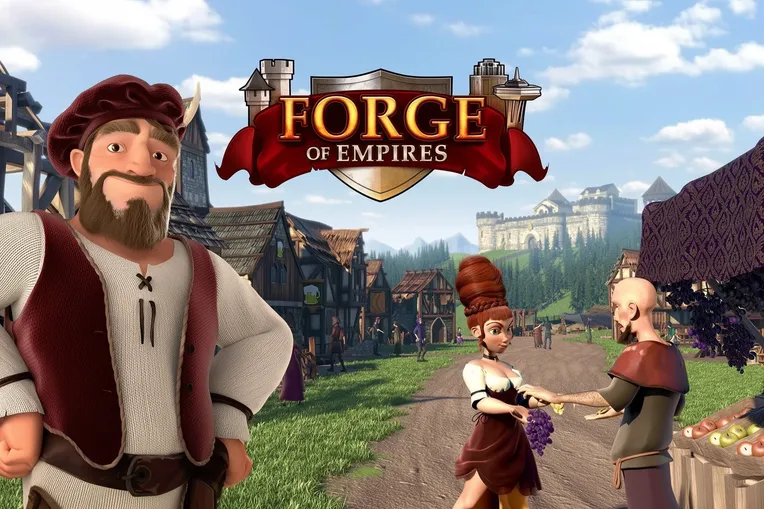Forge of Empires Review – From Stone Age Shacks to Space Age Stacks, How Far Will You Grind?
Imagine SimCity and Civilization had a love child, and that kid grew up hooked on freemium upgrades and hex battles. That's Forge of Empires. You kick things off with a handful of huts, collecting coins and supplies every few minutes. Research unlocks new buildings and nudges your city into the next era: Bronze, Iron, Colonial, and so on. Every age shakes up your tech tree, army, and how you juggle space.
Welcome to the Stone Age: Your First Few Clicks
Day one. I'm staring at a patch of grassland with a couple of tents and what might be a campfire some intern forgot to finish animating. Welcome to the Stone Age. My task? Turn this prehistoric trailer park into an empire. Cool, cool.
The tutorial hands me a building menu and a gentle nudge: "Construct a hut." I drop it. It builds in seconds. Sweet. Then it eats my only free population. And just like that, no workers, no buildings, no nothing. Just a hut and some shame.
That's the vibe here. You hit a limit, try to fix it, and hit another. Build too fast and your economy wheezes. Wait too long and your neighbors are sipping wine in the Iron Age. Every move costs something: coins, supplies, space, dignity.
Forge Points, Diamonds, and the Waiting Game
Forge runs on forge points. One an hour. You'll burn through 'em researching tech, upgrading buildings, making trades. It's the lifeblood of everything, and the game hands it out with tweezers.
At first, it's fine. You pop in, spend a few points, poke a building, maybe win a skirmish, then bail. But the gaps grow fast. Want Bronze Working? That's 16 points. No stash? Come back later. Much later.
Diamonds exist, obviously. You get a few early: finish a quest, here's 50. Nice. Then the building you want? 250. Speed up a tech? 1,000. That early drip? Just a taste. Classic.
I held out. Truly. But then the Iron Age flashed at me like a buffet at 3am, and I folded. Five bucks. For science. Not proud of it.
Combat 101: Hexes, Spears, and Hard Lessons
Let's talk fighting. Most games in this genre? Auto-resolve and nap. But Forge makes you show up. Real hexes. Real turns. Real poking.
My first brawl was two spearmen and a dream versus some angry-looking tribesmen. I moved. I missed. I stabbed. Pretty basic, but weirdly satisfying. As the game goes on, stuff starts clicking. Archers shoot far. Cavalry flanks. Siege weapons explode if you look at them funny.
There's legit depth here, if you've got the energy. Auto-battle skips the grind, but manual gives you control. Problem is, troops aren't free. They take time and stuff to train. Lose 'em, and you wait. So yeah, I got picky. Only fought battles I knew I'd win. Or, like, kinda knew.
The game rewards smart play. But it's allergic to mistakes. One dumb move and you're rebuilding for a day. I've deleted road tiles in pure panic.
Joining a Guild: The Cult of Forge Math
Around hour six, I unlocked guilds. Thought I'd find some casual co-op. Instead, I walked into a spreadsheet temple. Charts. Timers. Guides with 90s forum energy. Half the advice was about buildings I'd never heard of.
And somehow? Super useful.
Guilds flip the game on its head. You're not just building now. You're investing. You throw forge points into other people's Great Buildings, and if you do it right, you profit. That building everyone's obsessed with? The Arc. It turns helping others into a points engine. Sort of.
The catch? You need stuff from the Future Era to build it. I was still over here boiling water in a clay pot. So I hustled. Traded everything I had. Messaged strangers like a street vendor. Made deals I didn't understand. Eventually, I scraped together enough.
And yeah, once The Arc landed, things sped up. Forge points flowed. Stuff made sense. That guild that looked like a spreadsheet cult? Kinda felt like home. There's a whole economic sim running underneath this thing. Still don't know why it works. But it does.
So Many Quests, So Little Time
To keep you hooked, Forge hurls events at you like it's running out of pixels. Summer carnivals. Fall bake-offs. Soccer challenges. All with buildings you probably need.
Sounds fun. It is. But also, it's... a lot.
You'll be asked to log in constantly. Do some quests. Click some stuff. Upgrade something. Then do it again two hours later. Some are easy: collect coins, fight someone, click a chicken. Others? Wild. "Spend exactly 47 forge points, build three blacksmiths, and pat your neighbor's dog." Close enough.
I started sneaking in logins between meetings. Just quick taps to keep streaks alive. It got real. And it hit me, Forge isn't just about empire-building. It's about routine-building. Like a fantasy calendar app that happens to have swords.
From Mud Huts to Space Shrines (and the Panic In Between)
After a few days, my city was a mess. Thatched roofs next to brick roads. Temples glowing with future lightning. Some kind of goat statue in the middle of it all. It worked, though. Sorta.
I had loops going. Points timed. A ten-tech plan ready to fire. I felt brilliant.
Then I checked the leaderboard.
Turns out, other players had cities the size of small countries. Maxed-out everything. Space-age tech. Arc levels that made mine look like a stick figure. Instant ego drop.
Was I doing it wrong? Should I have rushed buildings? Farmed more points? Dropped another five bucks?
Nah. I was doing fine. But Forge doesn't want you feeling fine. It wants you chasing. You're always just slightly behind. Always wondering. It's sneaky-smart. And yeah, kind of toxic. But man, it keeps you coming back.
